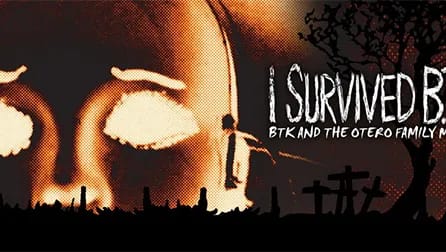“I Survived BTK” A Story of the Quest for Redemption

One of the first scenes in the documentary “I Survived BTK” (also known as “Feast of the Assumption: BTK and the Otero Family Murders”) is Charlie Otero speaking from prison where he was serving a 44-month sentence after accepting a deal to plead guilty for aggravated battery. The scene is ironic but telling. Otero’s life was upended when his parents and two young siblings, ages 11 and 9 were murdered by Dennis Rader, Wichita’s BTK killer. Charlie at age 15 and his two other siblings discovered the gruesome scene that became a backdrop for the decades-long downward spiral that defined his life.
Otero today is an imposing figure with tattoos, bald all but for a shaven rectangular ponytail. It is sometimes difficult to remember that he is the victim here. Television coverage of the trial shows Rader, a mousy, white, sexual deviant, torturer and murderer stammering as he makes his statement during his sentencing for killing 10 people. He snivels as he tries to make comparisons of his likes with those of his victims. The perceptual juxtaposition of criminal and victim upends stereotypes and is almost as disturbing as the graphic images of the murdered. Turning off the sound, it might be easy to peg Otero as the bad guy. His friends are a tough lot. His wife, who they allege staged the abuse for which Otero eventually served time, is presented as being crazy and a meth user. Rader, on the other hand, a compliance officer, the president of the congregation of his Lutheran church and Cub Scout leader is the real monster. Rader lived his ostensibly respectable life without so much as a suspicion, remaining undetected as BTK (bind, torture and kill) for decades. Otero lived in uncertainty, living in fear that he might be next, constantly moving from one fringe job to another until he, himself, landed in jail. It is a life is echoed in the testimony of Steve Relford who in the rundown Hiway House Hotel on Central in Albuquerque tells of how the murder of his mother by Rader that also changed his life forever. Relford was five years old and in the house, locked in a bathroom, as his mother was strangled. He never regained a foothold in his life. Seeing Relford and Otero together is more than emotional, it is heart-rending.
Writer and director Mark D. Levitz and writer Steve Armstrong do a masterful job by simply following Otero as he re-visits old haunts. He re-connects with old biker buddies in Alamogordo, shows the crew where he lived during his self-confessed outlaw days with his girlfriend in Organ, New Mexico and the prison cell dug into the hillside behind his home that was a gas station and restaurant and where he was able to escape his demons, if just for a little while.
During the hearing, Otero hears that his son has been critically injured in a bicycle accident. Joseph Otero Shafer, who was 17 at the time of the accident, spent several months in a coma. He emerged with cognitive impairments. The film ends with Charlie visiting with his son, committed to supporting and loving his family.
As this movie shows, respectability transcends appearance and, although Charlie Otero is a victim, in this telling, he is also a hero, but more importantly, a good man while Rader, a “typical,’ “normal looking” “everyday citizen” is the true villain, distinctions that are crucial to remember and take to heart.